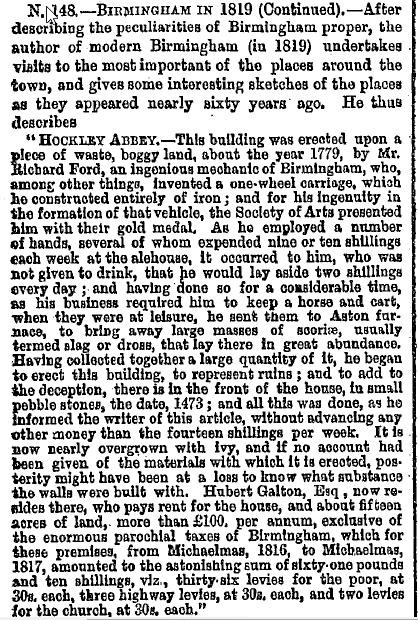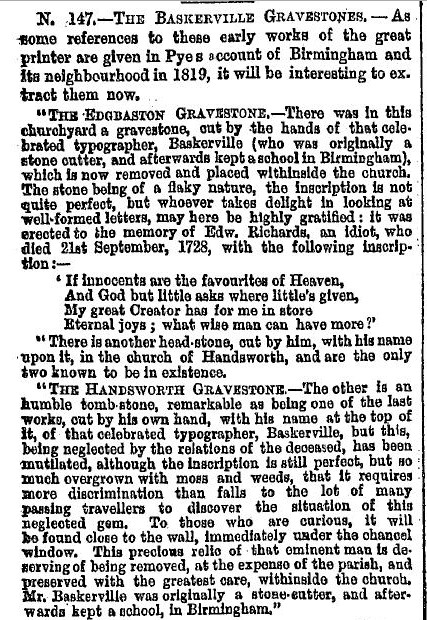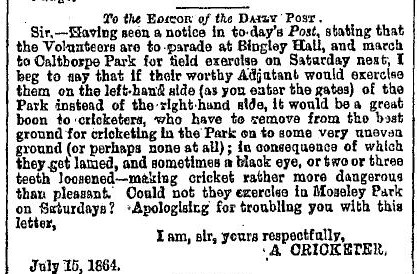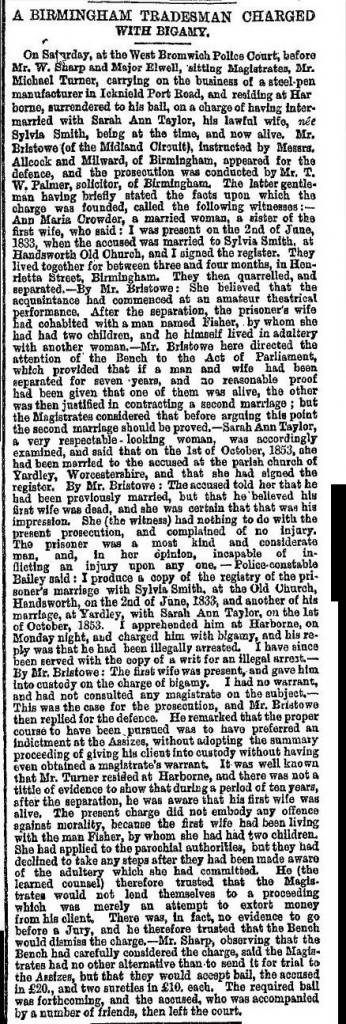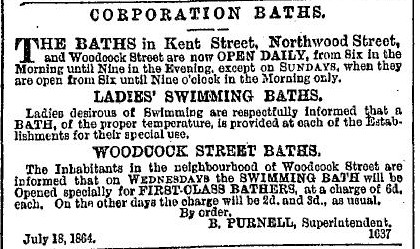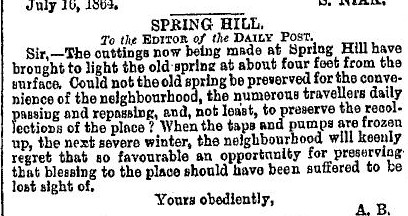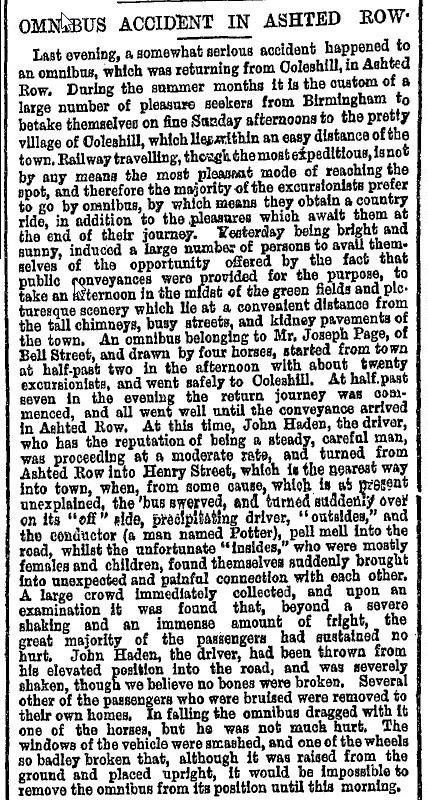-
Welcome to this forum . We are a worldwide group with a common interest in Birmingham and its history. While here, please follow a few simple rules. We ask that you respect other members, thank those who have helped you and please keep your contributions on-topic with the thread.
We do hope you enjoy your visit. BHF Admin Team
You are using an out of date browser. It may not display this or other websites correctly.
You should upgrade or use an alternative browser.
You should upgrade or use an alternative browser.
Newspapers : From Birmingham Post 150 years ago
- Thread starter mikejee
- Start date
DavidGrain
master brummie
Immanuel Church has been mentioned elsewhere on the Forum. I have a vague recollection of the church which I presume was demolished with the redevelopment of the area in the 1960s.
paul stacey
master brummie
very interesting Mike, I wonder if anything became of the bones discovery, or any report as to their ancestry.
Castle Yard is the yard behind the Castle Hotel, which is shown on the 1829 and 1839 maps, but which has been built over by the time of the c1889 OS map. I assume this is the same as "Old Castle Yard". This was to the north of castle st, and so would have occupied part of the land on which now sits the Pavillions.
DavidGrain
master brummie
In Victorian times arsenic was used as a cosmetic "to improve the complexion"
The bigamy case sounds like an Eastender's episode - or in old money, Peyton Place. Found a new word in the St Paul's piece: 'scatheless'. Never heard it used before. Viv.
Sent from my iPad using Tapatalk HD
Sent from my iPad using Tapatalk HD
paul stacey
master brummie
I am not absolutely certain Mike, but I believe that a first Class bath was both hot, and with clean water, a second Class Bath was already used and was tepid.
The bigamy case sounds like an Eastender's episode - or in old money, Peyton Place. Found a new word in the St Paul's piece: 'scatheless'. Never heard it used before. Viv.
Sent from my iPad using Tapatalk HD
viv that case brings to mind my gt gt grandad it was around the same date as this snippet that he absconded from ladywood leaving his wife with 2 young lads...went to yorkshire and re married only he was never found out..that is until i came along lol..
You do wonder how many people did this Lyn. Probably many, many more than we think.
Bill Dargue's site mentions the spring as holy and having healing qualities. Maybe it was again left open after being discovered in the1860s, as Bill's site says it was covered in the 1880s. But that still doesn't explain why it was covered over pre-1860s. Viv.

Sent from my iPad using Tapatalk HD
Bill Dargue's site mentions the spring as holy and having healing qualities. Maybe it was again left open after being discovered in the1860s, as Bill's site says it was covered in the 1880s. But that still doesn't explain why it was covered over pre-1860s. Viv.
Sent from my iPad using Tapatalk HD
It's so easy to forget the role that early baths played now that we see them as leisure facilities rather than public health facilities. And a lot was originally invested in them to house bathing pools (separate for men and women), swimming pools (also separate for men and women), Turkish baths and laundry facilities. Although the swimming pools for women were short, imagine the relief of stepping into the pool having been liberated from those dreadful, unhealthy, restrictive corsets they wore! Viv.
Sent from my iPad using Tapatalk HD
Sent from my iPad using Tapatalk HD
Janellewarden
proper brummie kid
Enjoy the Birmingham post of 150 years ago. I am looking for families in Ladywood in the 1860's..anyone know the names of Hall and Tisley? [FONT=Helvetica Neue, Arial, sans-serif]Name: Albert Tilsley Birth Place: Ladywood, Birmingham Death Date: 30 Dec 1914 Death Location: France & Flanders Enlistment Location: Birmingham Rank: Private Regiment: Royal Warwickshire Regiment Battalion: 2nd Battalion Number: 1513 ; he is buried in Calais, France. He was living with our Emma Warden Wells as a young boy as a foster son. I think his mother may have been Selena Hall Tisley. James Hall name married Mary Ann Warden they had no descendants only her niece Sarah Warden lived with them when her mother Leonora Hands Warden died. Sarah continued to live on Steward Street as an infant teacher in 1900 until 1917 when she died.
janelle warden [/FONT]
[FONT=Helvetica Neue, Arial, sans-serif]Also is Bromsgrove, Worcestershire, England very far from Birmingham? Our Wardens seemed to be in Bromsgrove and Chaddesley, Corbett, Worcester, England before going to Birmingham. I want to say they may have been in Middlesex, London area in 1700. 4,000 years ago the Warden name was in Mesopotamia and Egypt area ; so did they make their way north with the Roman army? Our Warden DNA takes us back that far. Wardle is also a listing of the name Warden. [/FONT]
janelle warden [/FONT]
[FONT=Helvetica Neue, Arial, sans-serif]Also is Bromsgrove, Worcestershire, England very far from Birmingham? Our Wardens seemed to be in Bromsgrove and Chaddesley, Corbett, Worcester, England before going to Birmingham. I want to say they may have been in Middlesex, London area in 1700. 4,000 years ago the Warden name was in Mesopotamia and Egypt area ; so did they make their way north with the Roman army? Our Warden DNA takes us back that far. Wardle is also a listing of the name Warden. [/FONT]
Janellewarden
proper brummie kid
interesting article on Chaddesley Corbett....Now if I can find all the Wardens and Hands who lived here in 1700-1850's I would be ecstatic. 1777 in Chilvers Coton, Warwickshire, EnglandDeath abt 1831 in Shipton on Stour, Warwickshire, England; now shipton on stour is where the Hands-Plumb got married and I suppose these towns are all fairly near to Birmingham....they all seemed to settle in B'ham....Do keep sending more information on these towns....
22.7.1864
We now know that the spring in Spring Hill ( mentioned on 19th) was uncovered during sewage works.
The way stillborn children were treated then in London, and probably Birmingham also.
Number of divorces (or as they called it "dissolution of marriage" ) up to 255 in 1863. It was only since 1857 that you did not have to obtain an act of parliament to divorce someone, and before then it was virtually impossible ffor a women to get a divorce - bit like some Muslim countries now.
Candles were still sometimes used in coalmines , over 40 years after the safety lamp was invented.
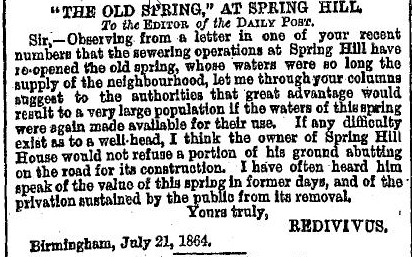


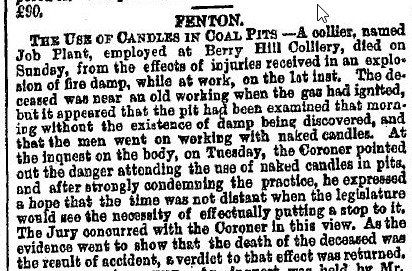
We now know that the spring in Spring Hill ( mentioned on 19th) was uncovered during sewage works.
The way stillborn children were treated then in London, and probably Birmingham also.
Number of divorces (or as they called it "dissolution of marriage" ) up to 255 in 1863. It was only since 1857 that you did not have to obtain an act of parliament to divorce someone, and before then it was virtually impossible ffor a women to get a divorce - bit like some Muslim countries now.
Candles were still sometimes used in coalmines , over 40 years after the safety lamp was invented.




mike you are quite right about how still borns were treated...i have quite a few newspaper snippets of a so called midwife living in longacre nechells to help the unfortunate mothers who lost their children buried them in her own back garden...many were found in her back garden in little boxes and the the woman did receive a jail sentence for not reporting still born deaths...this was in the 1880s if memory serves me right but would have to check my notes to confirm that date..
Last edited:
W
Wendy
Guest
You are right Lyn there was another lady who kept still borns in her cellar. I suppose we would now recognise a mental health problem. Very sad. xx
paul stacey
master brummie
The driver was very lucky he would have been about 12' off the ground when thrown, I suspect one of the leather springs at the rear came apart throwing all the weight onto the rear wheel and ceasing it. thereby pulling it over, the inside trace horses were lucky too as they could have broken their legs.paul


